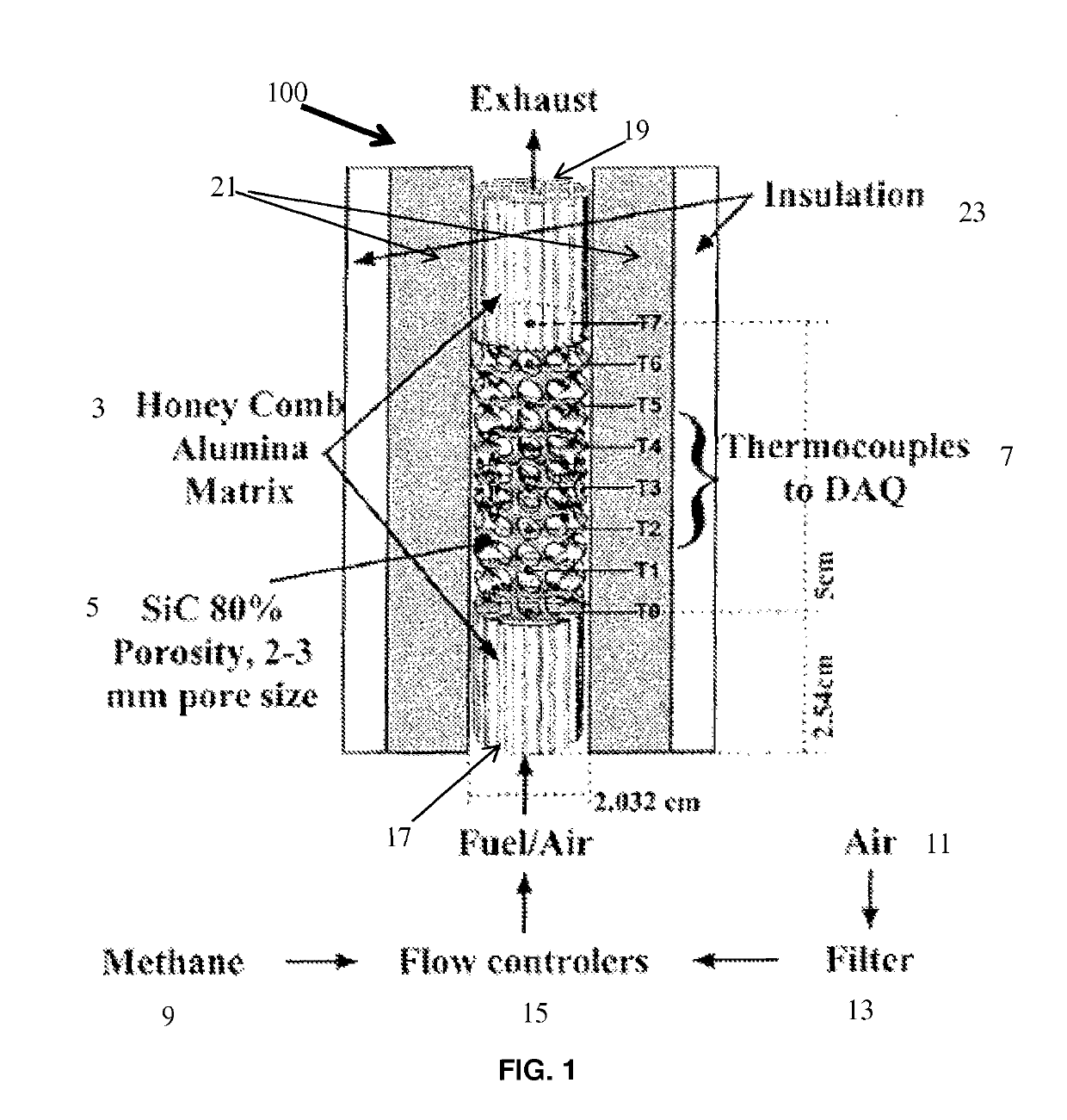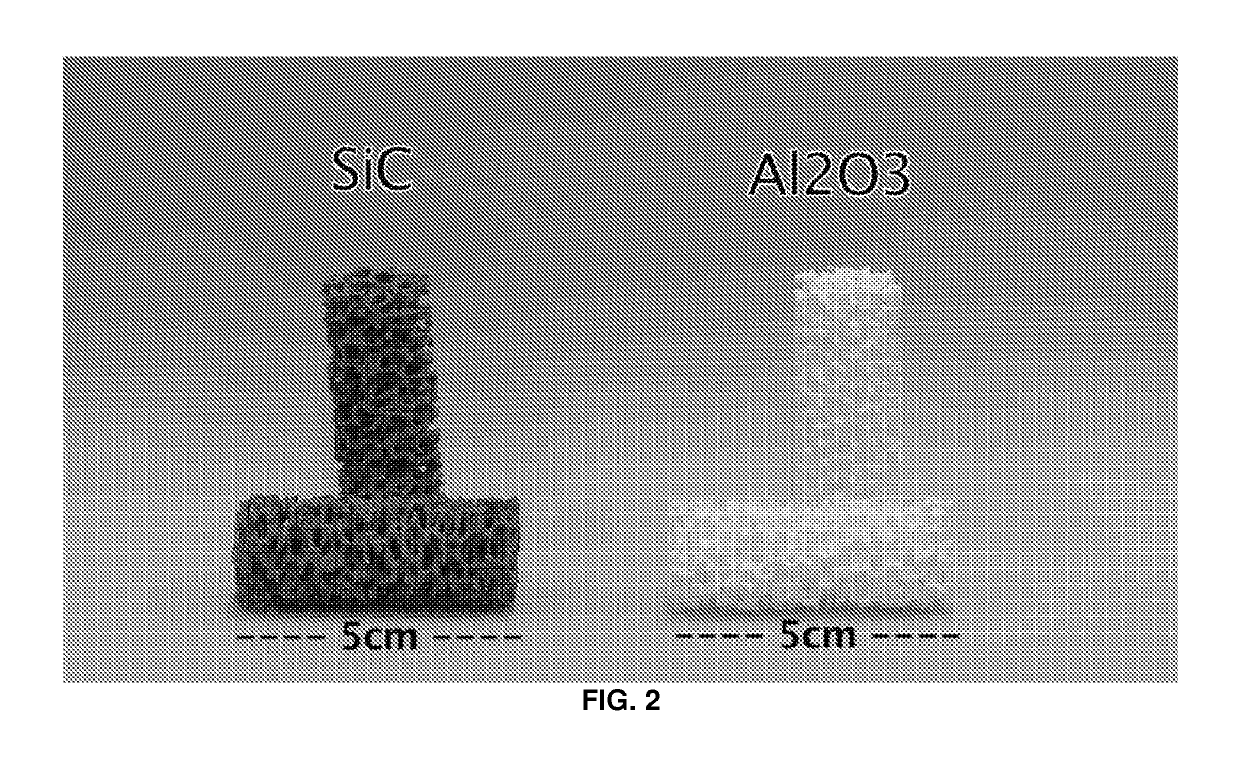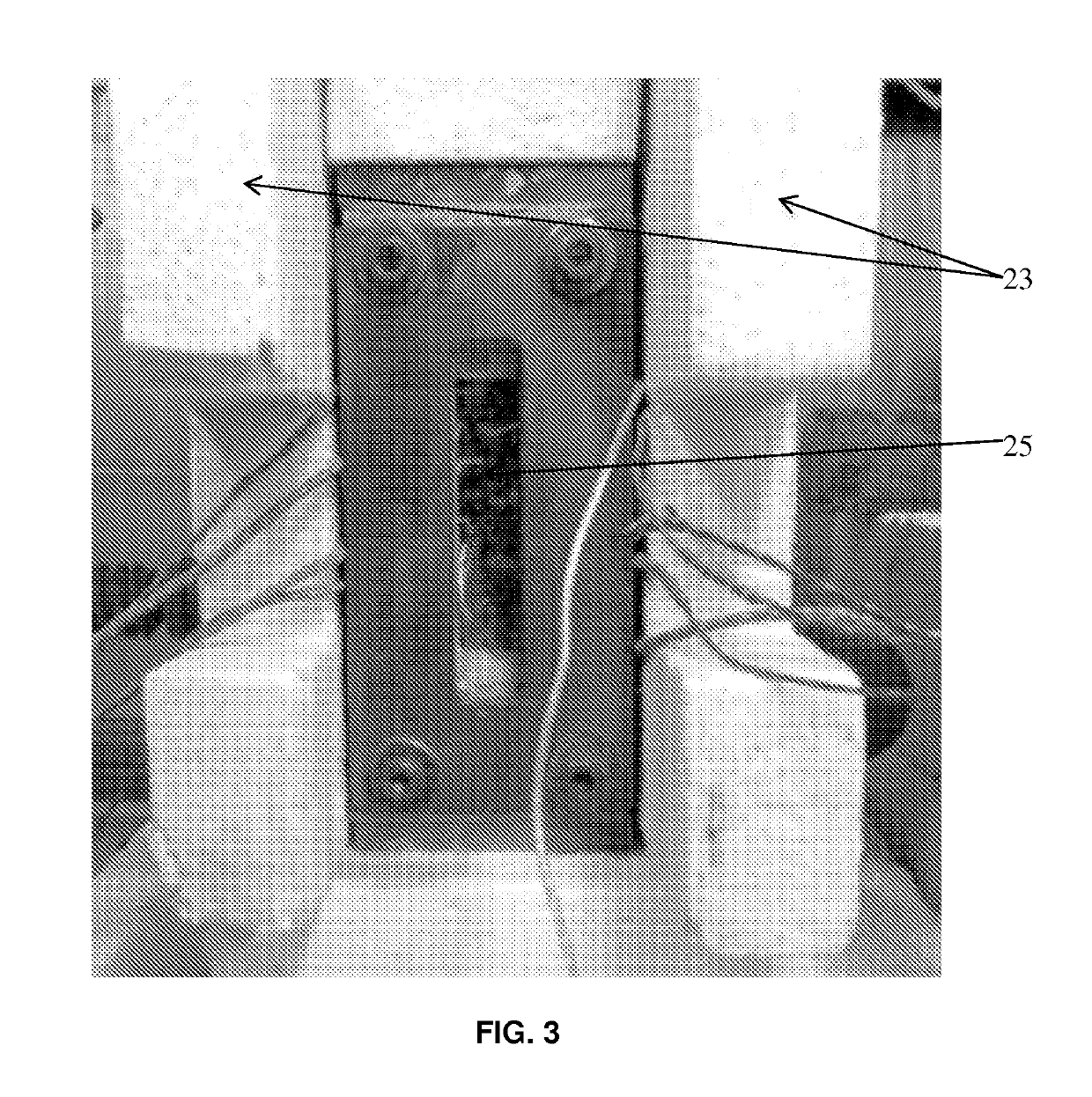Perovskite catalysts enhanced combustion on porous media
a technology of perovskite catalysts and porous media, which is applied in the direction of combustion using catalytic materials, physical/chemical process catalysts, combustion types, etc., can solve the problems of high catalytic activity of noble metals, ceramic catalytic properties will degrade, and the fuel burned more efficiently and efficiently
- Summary
- Abstract
- Description
- Claims
- Application Information
AI Technical Summary
Benefits of technology
Problems solved by technology
Method used
Image
Examples
example 1
[0045]This Example describes the experimental setup used in the study. Referring to FIG. 1, in one embodiment, a schematic representation of a matrix stabilized porous burner with a combustion chamber 100 is provided. More particularly, the combustion chamber 100 can be composed of two types of porous media: two alumina honeycombs 3 at each end of the combustion chamber, and a reticulated SiC or alumina foam 5 in the middle. Eight K-Type thermocouples (T0-T7; collectively “7”) were placed along the axis of the cylindrical SiC foam, equidistantly spaced, 0.72 cm apart, as seen in FIG. 1. These eight thermocouples measured the temperature distribution within the combustion chamber. They have an uncertainty of 0.75% from 0 to 1250° C. The thermocouples were connected to a National Instruments data acquisition system (NI USB-6210), and then logged into LabView virtual instrument for data collection.
[0046]High grade methane 9 (99% purity) and dry laboratory compressed air 11 were used in...
example 2
[0049]This Example describes the preparation of the multiple samples of reticulated foam ceramics use in the study. In addition to the uncoated inert reticulated foam, perovskite catalyst coated reticulated foams were used. By conducting several runs of both inert and catalytically enhanced reticulated foams, the run to run variation and repeatability could be measured.
[0050]The catalytically enhanced ceramics were coated using the dip coating method. In brief, eight samples of SiC articulated foams were coated with five different compositions of perovskite catalysts (as referenced above). The dip coating process consisted of dissolving the perovskite powders in isopropyl alcohol and placing the slurry mixture in a test tube submerged in a water bath within an ultrasound machine to ensure homogenization of the slurry. The reticulated foam ceramic was then lowered into the slurry and held suspended for one minute, which allowed enough time for the coating to penetrate the pores and b...
example 3
[0051]This Example describes the initial ignition and use of the burner in the study, in addition to certain related results. The reactants enter the burner from the bottom portion 17 of the combustion chamber 100 as seen in FIG. 1. The burner is first ignited, near the top of the reticulated foam ceramic or at the thermocouple location T7, at Φ=1.0. Once ignited the Φ is reduced to 0.7. The fuel flow rate was varied to obtain the desired Φ, the air volumetric flow rate is held constant at 0.008 m3 / min throughout the experiment. After ignition, at Φ=0.7, the premixed combustion wave will propagate in the opposite direction of the flow. Through the quartz window (FIG. 3, ref. No. 25), the combustion zone was observed as a highly luminescent zone slowly traveling upstream. The combustion wave is allowed to travel against the direction of the flow to record the eventual downstream movement of the wave once the Φ is further reduced. This initial value of Φ=0.7 is used to warm up the com...
PUM
| Property | Measurement | Unit |
|---|---|---|
| porosity | aaaaa | aaaaa |
| pore size | aaaaa | aaaaa |
| pore size | aaaaa | aaaaa |
Abstract
Description
Claims
Application Information
 Login to View More
Login to View More - R&D
- Intellectual Property
- Life Sciences
- Materials
- Tech Scout
- Unparalleled Data Quality
- Higher Quality Content
- 60% Fewer Hallucinations
Browse by: Latest US Patents, China's latest patents, Technical Efficacy Thesaurus, Application Domain, Technology Topic, Popular Technical Reports.
© 2025 PatSnap. All rights reserved.Legal|Privacy policy|Modern Slavery Act Transparency Statement|Sitemap|About US| Contact US: help@patsnap.com



